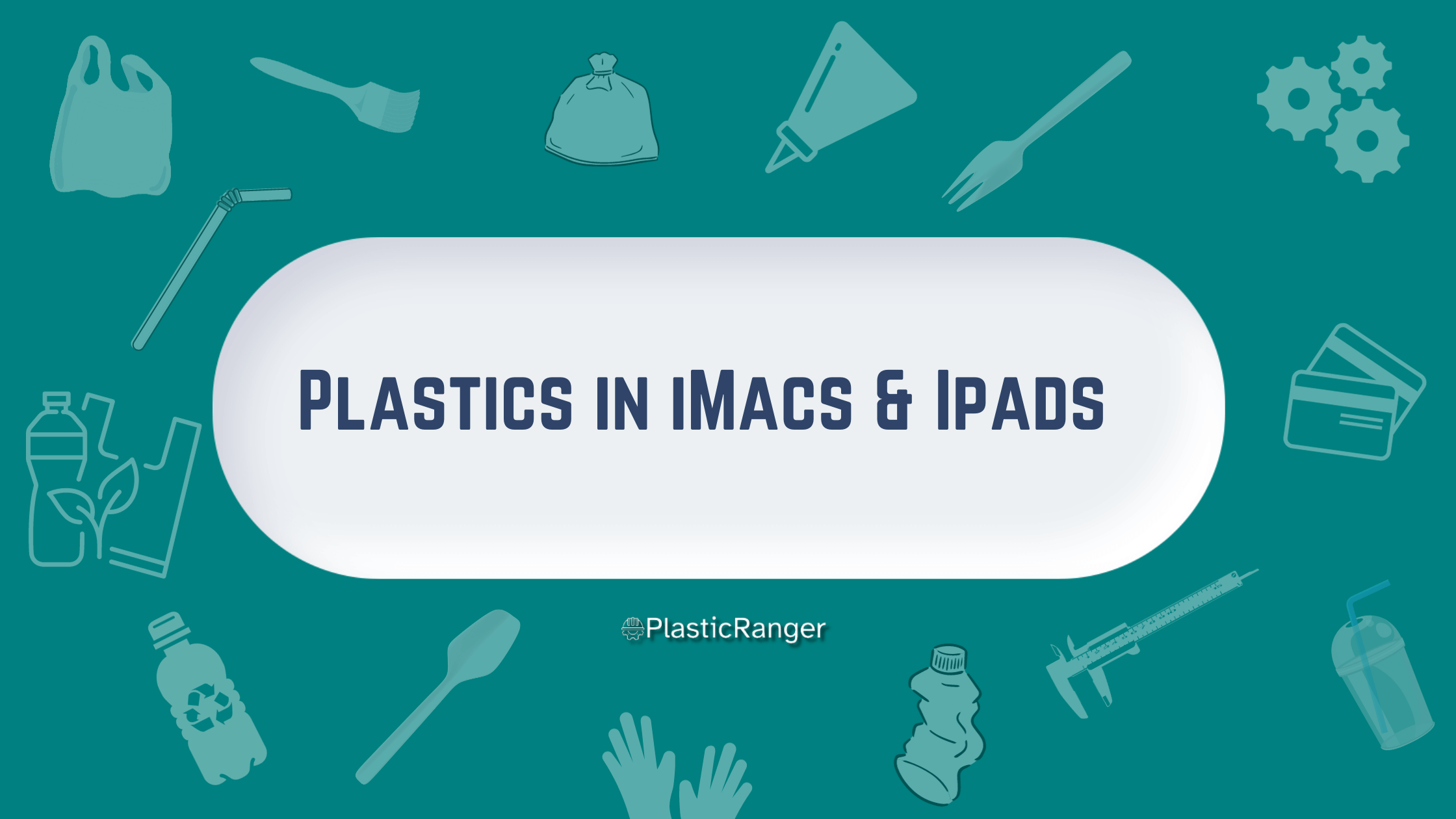Apple, the technology titan behind the iPad and iMac, has consistently pushed the boundaries of design, functionality, and materials. Over the years, while metal and glass have been predominant in the aesthetic of Apple products, plastics also play a significant role in these devices.

Plastics in iPads and iMacs: A Comprehensive Overview
This article delves into the plastics used in iPads and iMacs, highlighting their properties, applications, and the implications of their use.
The Role of Plastics in Apple Devices
Plastics offer versatility, durability, and cost-effectiveness, making them indispensable in electronics. In iPhones, iPads, and iMacs, plastics are primarily found in internal components, although they can occasionally be found in external parts.
iPads
In iPads, plastic components are often utilized in the following ways:
Buttons and Switches: The physical controls, such as the volume rockers and power buttons, are commonly made of plastic, providing a durable and tactile response.
Internal Components: Various internal structures, like brackets, holders, or connectors, are made of plastic due to their lightweight and moldable characteristics.
Antenna Lines: To ensure optimal signal reception and transmission, plastic antenna lines are integrated into the metal casing of some iPad models.
iMacs
For iMacs, the role of plastics is somewhat different:
Keyboard and Mouse: The Apple Magic Keyboard and Magic Mouse, which often accompany the iMac, have plastic components, balancing aesthetics with function.
Internal Framework: Many internal structures, supports, and cable connectors inside the iMac are plastic, offering strength without adding significant weight.
Types of Plastics and Their Properties
The choice of plastic largely depends on the desired properties:
Polycarbonate (PC): This versatile plastic is known for its high impact strength, clarity, and temperature resistance. Polycarbonate is often used for parts that require durability and transparency.
High-density Polyethylene (HDPE): Commonly found in electronic casings, HDPE is praised for its lightweight and insulating properties.
Polypropylene (PP): Known for its flexibility, PP is used in components that need to resist fatigue.
Acrylonitrile Butadiene Styrene (ABS): This is a standard plastic in electronics because of its toughness, Density, and ability to be injection molded into precise shapes.
Advantages of Using Plastics in iPads and iMacs
Lightweight Design: One of the most notable advantages of using plastics is the weight reduction. Devices like iPads are meant to be portable, and a lighter device enhances user comfort. Similarly, while iMacs are desktop computers, a reduced weight makes them easier to move and set up. Using metals or other heavier materials would significantly increase the overall weight, making plastics preferable.
Cost-Efficiency: From a manufacturing perspective, plastics are generally less expensive than many other materials. They can be mass-produced easily through techniques like injection molding, enabling Apple to achieve economies of scale, thus potentially reducing the final cost to the consumer.
Durability and Strength: Modern plastics like polycarbonate and PET offer flexibility and strength. This dual property ensures that internal components can withstand daily wear and tear, accidental drops, and other mechanical stresses. Plastics can absorb impacts better than many rigid materials, reducing the risk of damage to internal components.
Design Flexibility: Plastics can be molded into intricate shapes and forms, allowing for greater design freedom. This flexibility is crucial for internal components that require precision. Furthermore, plastics can be produced in various colors, textures, and finishes, providing designers with a broader palette for aesthetic choices.
Insulation and Safety: Plastics have excellent dielectric strength. This means reduced risk of short circuits or electrical faults for electronic devices. They also prevent the device from getting too hot during prolonged use, ensuring user safety.
Seamless Integration: Using plastics, Apple can integrate features like antenna lines in its metal-bodied iPads without compromising signal strength. Plastic allows radio waves to pass through, ensuring the device maintains wireless solid connectivity.
Sustainability Initiatives: While it might seem counterintuitive, Apple’s use of plastics can also contribute to sustainability. The company is increasingly incorporating recycled plastics into its devices. By doing so, they reduce the demand for virgin plastic production, leading to a potential decrease in environmental pollution and energy consumption.
Resistant to Environmental Factors: Plastics are generally corrosion resistant, unlike metals that might oxidize over time. This ensures a longer lifespan for components, especially in varying environmental conditions.
Environmental Concerns and Apple’s Initiatives
The environmental implications of plastic use have not escaped Apple’s attention. Plastics can contribute to environmental degradation, mainly if not properly recycled.
Apple, aware of the environmental concerns associated with plastics, has made efforts to address these issues:
Recycling Programs: Apple has established recycling programs, encouraging users to return old devices. These devices are refurbished or responsibly recycled, ensuring that plastics and other materials are not in landfills.
Using Recycled Materials: Apple is progressively moving towards using more recycled materials in its products. For instance, the latest models of Apple devices often feature recycled plastic components.
Research into Bioplastics: Apple continues to invest in research to discover sustainable alternatives to traditional plastics, including exploring the potential of biodegradable plastics. According to current findings, the most prominent contender seems to be PLA Plastic.
The Future of Plastics in Apple Devices
As technology and materials science advance, the plastics used in devices like iPads and iMacs will likely transform. Apple’s commitment to sustainability suggests a future where recycled and bio-based plastics might become the norm.
Furthermore, with the miniaturization of components and the increasing importance of weight and form factor, plastics will remain a crucial material.
However, their composition, source, and life-cycle management may change to reflect more sustainable and environmentally conscious practices.
Conclusion
The role of plastics in devices such as iPads and iMacs is multifaceted. While they may not always be visible externally, they are critical to the device’s functionality and structure. As the conversation around sustainability grows louder, Apple’s approach to plastics – from sourcing to disposal – will undoubtedly evolve, reflecting a commitment to innovation and the environment.
Quick Navigation
